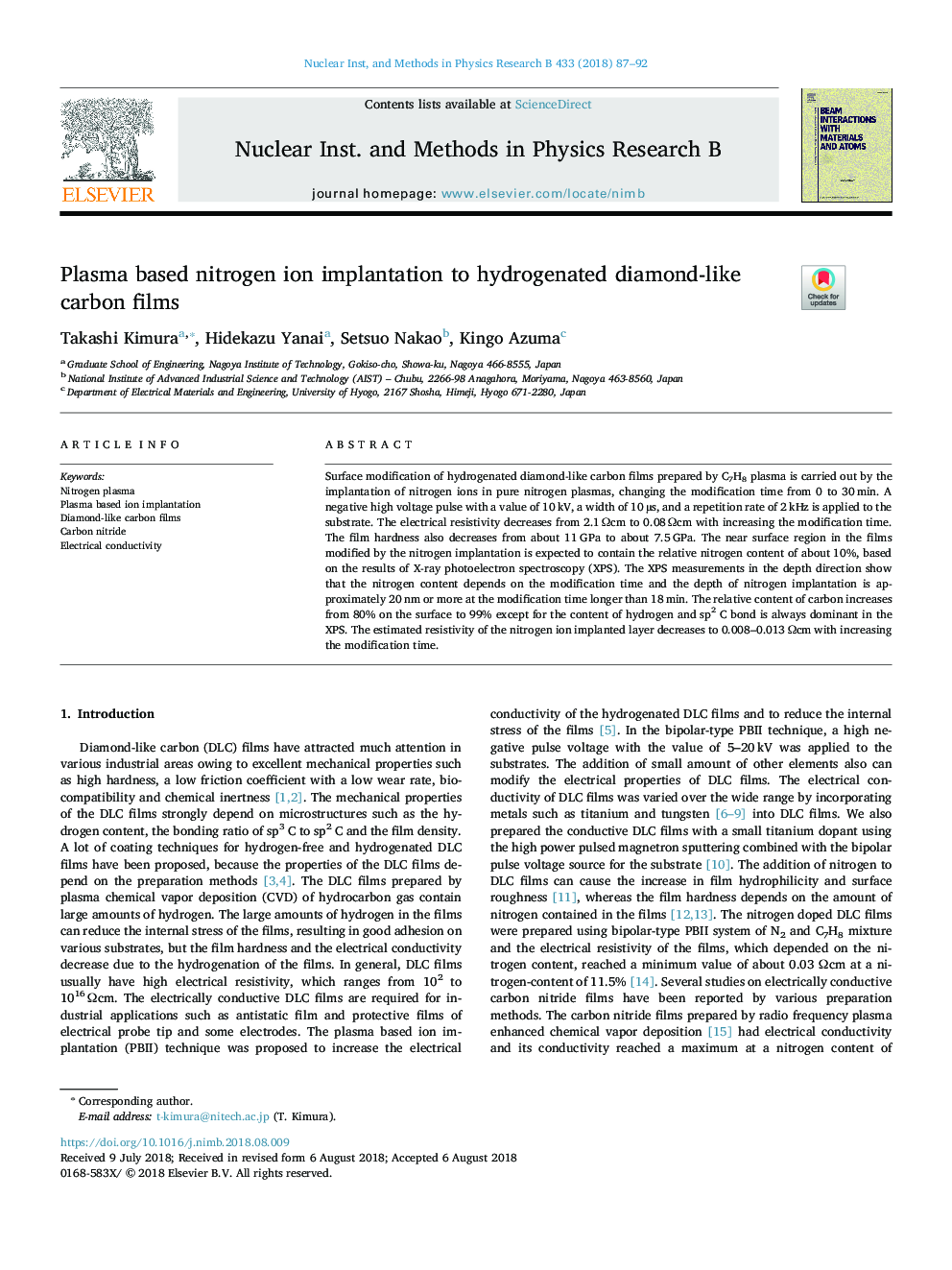| Article ID | Journal | Published Year | Pages | File Type |
|---|---|---|---|---|
| 8039029 | Nuclear Instruments and Methods in Physics Research Section B: Beam Interactions with Materials and Atoms | 2018 | 6 Pages |
Abstract
Surface modification of hydrogenated diamond-like carbon films prepared by C7H8 plasma is carried out by the implantation of nitrogen ions in pure nitrogen plasmas, changing the modification time from 0 to 30â¯min. A negative high voltage pulse with a value of 10â¯kV, a width of 10â¯Âµs, and a repetition rate of 2â¯kHz is applied to the substrate. The electrical resistivity decreases from 2.1â¯Î©cm to 0.08â¯Î©cm with increasing the modification time. The film hardness also decreases from about 11â¯GPa to about 7.5â¯GPa. The near surface region in the films modified by the nitrogen implantation is expected to contain the relative nitrogen content of about 10%, based on the results of X-ray photoelectron spectroscopy (XPS). The XPS measurements in the depth direction show that the nitrogen content depends on the modification time and the depth of nitrogen implantation is approximately 20â¯nm or more at the modification time longer than 18â¯min. The relative content of carbon increases from 80% on the surface to 99% except for the content of hydrogen and sp2 C bond is always dominant in the XPS. The estimated resistivity of the nitrogen ion implanted layer decreases to 0.008-0.013â¯Î©cm with increasing the modification time.
Keywords
Related Topics
Physical Sciences and Engineering
Materials Science
Surfaces, Coatings and Films
Authors
Takashi Kimura, Hidekazu Yanai, Setsuo Nakao, Kingo Azuma,
